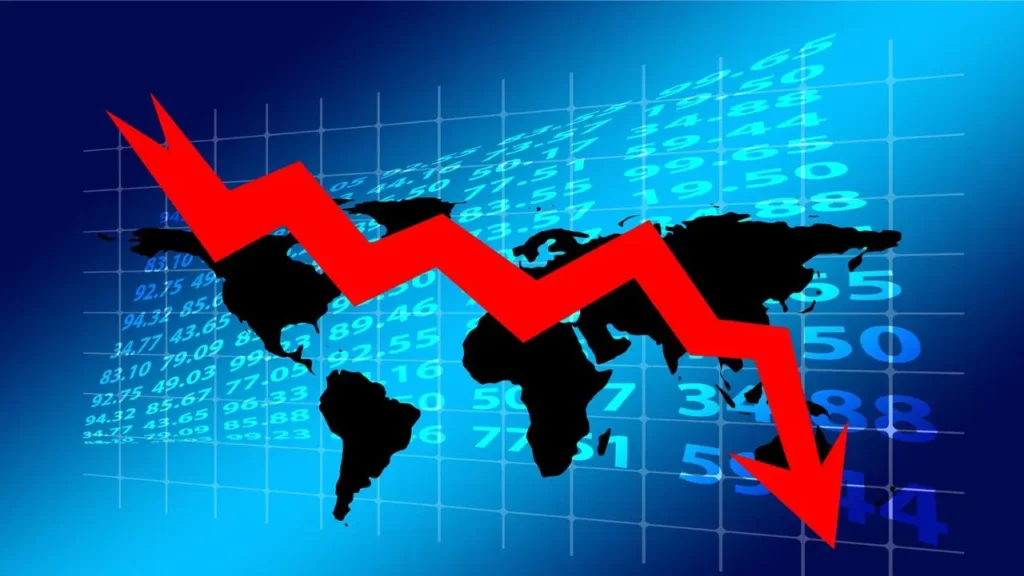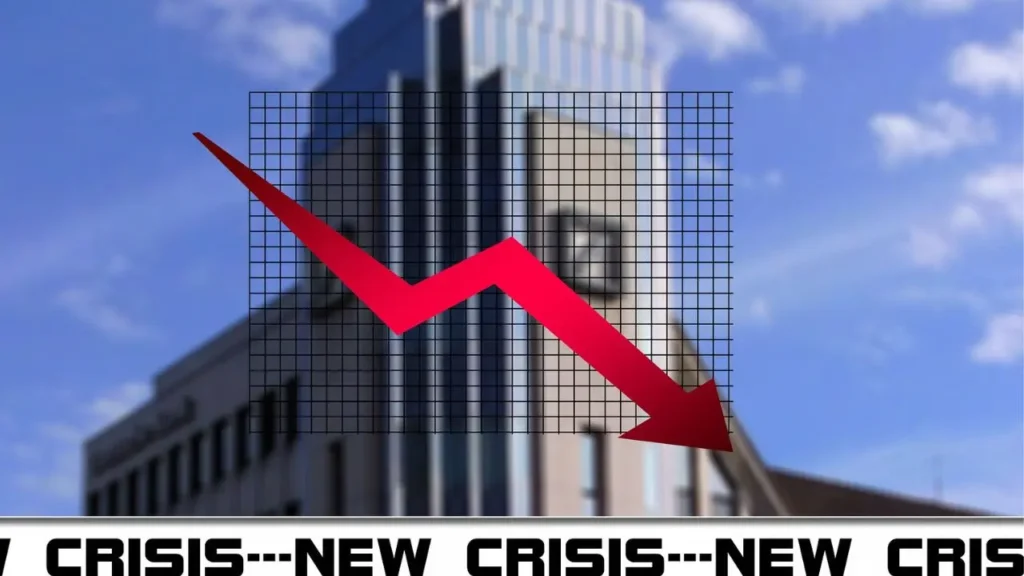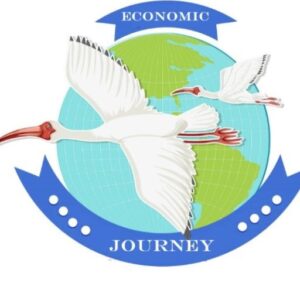
Introduction
A country’s economic activity is measured primarily by changes in production. When the economic situation of a sector of activity or the economy as a whole deteriorates, we speak of an economic crisis, which is a sudden deterioration in the economic situation and economic prospects of a country for a limited period or over several years and which marks the end of a period of expansion and the entry into a recession.
Definition of economic recession
Economic recession is defined as a widespread and prolonged decline in economic activity. It corresponds to a phase of falling growth rateor maintaining it at a very low level, in other words a period of decline in economic activity, or a period of economic decline that generally lasts several months. Therefore, a very brief period of slowdown is not considered a recession.
Generally, a country is said to have entered a recession when the economy declines for two consecutive quarters, primarily based on gross domestic product (GDP), i.e., the growth rate becomes negative.
The concept of economic recession is distinguished from the concept of economic slowdown, for which growth is less strong but still positive.
Recession is a constituent element of economic cycles (expansion / growth peak / contraction / recession / expansion, etc.). It becomes problematic when it is excessive in magnitude and duration.
Thus, the analysis of the economic situation reveals the existence of more or less long cycles, which all follow the same pattern : an expansion phase followed by a crisis phase (reversal of the economy), then recession, or even depression, before a new recovery phase takes over, as shown in the diagram below :

Measuring the economic recession
Aside from Gross Domestic Product (GDP), experts look at a wider range of measures to determine whether a country is actually in a recession.
The use of other indicators can also provide a more up-to-date view of the economic situation, allowing us to assess what is happening in the economy, analyze the economic cycle and see the expansion and contraction of economic activity over time, among these we can mention :
1- Real income
Adjusted for inflation, it measures how much people earn. Therefore, when real income falls, demand for goods and services decreases.
2- Job
It helps reflect the financial health of consumers. The more they work, the more money they will have and therefore the more money they will have to cover their expenses. Moreover, consumer spending represents 65% to 70% of GDP.
3- Industrial production
When companies see a contraction in demand, they can reduce their production, which leads to a decline in GDP.
The causes of the economic recession
Several factors can cause GDP decline. These include :
- Rising interest rates limit the ability of companies to invest and therefore reduce their production volume ;
- The decline in consumer confidence in the future is pushing them to cut back on spending and resort to hoarding ;
- Global trade wars through the adoption of protectionist policies through the application of high customs tariffs ;
- Sudden disruption in supply or demand for commodities such as oil, which may cause prices to explode ;
- Over-indebtedness of businesses and households ;
- Excessive and lasting inflation ;
- Mass unemployment ;
- The adoption by the State of the austerity policy in order to reduce public spending;
- A natural disaster or war ;
- The outbreak of a disease or virus ;
- Soaring prices due to inflation ;
- The advent of the financial crisis materialized by the stock market crash which led to the eradication of the purchasing power of many people.

Economic recession Cures
When dealing with a recession, there are two main schools of thought on how to counteract it :
1- Liberal approach
It is based on the principle that market mechanisms are largely sufficient to correct dysfunctions and imbalances in the economy. For this reason, liberals advocate that we must be wary of state intervention, considering that it is often even the cause of recession.
Furthermore, and according to this current, this period of recession, although difficult for individuals, has the advantage of cleaning up the market by eliminating the weakest or least competitive companies.
2- Keynesian approach
For this school of thought, the State is the only one capable of compensating for the weaknesses of the market and restoring the economic situation, especially in periods of recession and crisis.
Thus, interventionists believe that the government can increase its legislative and regulatory interventions while creating programs to help businesses and individuals with the aim of reviving the economy by supporting demand, encouraging consumption and stimulating job creation.
Difference between degrowth, recession and depression
1- Degrowth
Degrowth is a planned and voluntary phenomenon, advocated by proponents of an alternative, non-productivist economic model. Its unique feature is that it can only be organized in certain sectors. It corresponds to policies of profound sectoral reforms aimed at sustainably transforming the productive system and value accounting.
2- Recession
Recession refers to a prolonged but involuntary and unforeseen economic contraction, it is often a global phenomenon that affects several sectors at once.
She often calls for comprehensive recovery policies, competitiveness policies in order to regain market share.
3- Depression
A depression is a severe form of economic crisis that lasts much longer than a recession. Thus, if a recession is not stopped, it can lead to a depression, that is, a sharp and lasting decline in production and consumption, because what characterizes an economic depression is that the recession is significant and long-lasting.
Conclusion
An economic crisis is a sudden deterioration in the economic situation and prospects of a country or economic area. It may affect only one sector for a limited period of time or extend to the entire global economy for several years; in this case, we speak of an economic recession or, more seriously, a depression.

Your article helped me a lot, is there any more related content? Thanks!
thank you